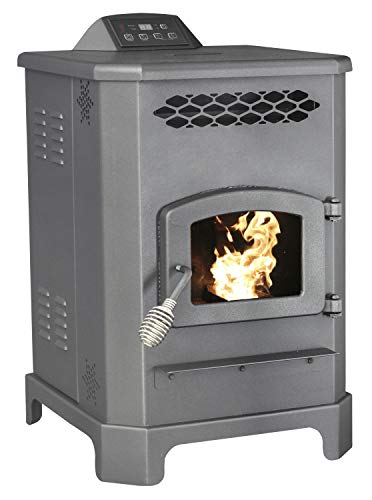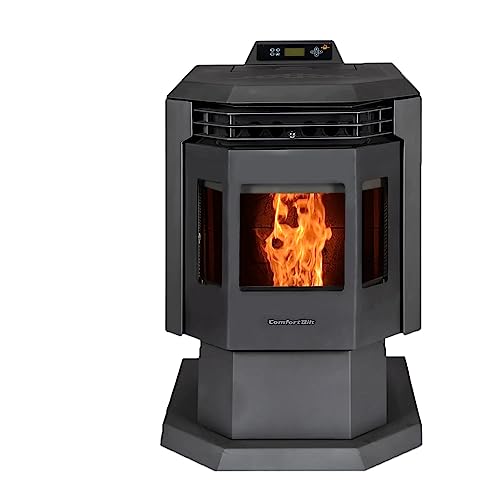The 10 Most Terrifying Things About Mini Pellet Stove
페이지 정보

본문
 Benefits of a Mini Pellet Stove
Benefits of a Mini Pellet Stove pellet stove fireplace stoves provide an attractive middle space between wood heat and supplemental heating sources. They are able to efficiently heat smaller areas and are much easier to use than wood-burning fireplaces.
pellet stove fireplace stoves provide an attractive middle space between wood heat and supplemental heating sources. They are able to efficiently heat smaller areas and are much easier to use than wood-burning fireplaces.They can also be used as a primary source of heating if they are properly designed for the space and maintained regularly. They shouldn't be used as a sole heating source.
Cost
Pellet stoves offer a much more affordable value than wood stoves. They come with a lower purchase price and are more efficient than traditional stoves, which means they can save you money in the long run. They use less electricity so you'll pay a lower bill.
However, the cost of pellets can vary depending on the amount you use and the regional fuel costs. The cost of installation can quickly add up. You will also need an area to store the pellets. However, ventless pellet stove stoves are an excellent choice for homeowners who wish to lower their heating expenses and improve the quality of their indoor air.
They are designed to be more compact than other stoves and are able to fit into a shed. They are made of recycled materials and can be used in a variety of different ways, such as for outdoor camping trips. They are easy to use and provide heat to small areas. They also consume a small amount of oxygen that allows them to be utilized in areas that require a lot of ventilation.
A pellet stove may be installed without a chimney. This is important because it can help reduce the overall cost of constructing and maintaining a stove. It can also provide a more constant source of heat compared to other types of heating such as oil or gas.
Pellet stoves produce less smoke and are more energy efficient than fireplaces with wood burning. They require less maintenance, because they don't need to be cleaned as often. They also are more traditional in appearance than electric stoves.
The pellet stove is suitable for most homes. However, it performs Best pellet stoves in homes with high levels of insulation and efficiency. The reason is because they don't use the ductwork system to distribute heat, and instead rely on warm air naturally circulating throughout your home.
You should hire professionals to conduct an energy audit in order to ensure your home is adequately insulate. This will tell you whether your home is properly insulated or if it requires to be insulated more. During this process the energy auditor will check for leaks and recommend any upgrades or repairs that need to be done.
Energy efficiency
modern pellet stove stoves offer an alternative to traditional wood-burning fireplaces. They produce less ash and utilize pellets made from renewable biomass sources. In addition pellet stoves require very little maintenance and are more efficient in energy use than gas fireplaces or other heating options. Pellet stoves are an excellent alternative for homeowners looking to reduce their carbon footprint while saving money on heating expenses.
These small stoves do not include a chimney, but instead vents to the outside via a forced-ventilation system. These systems consist of either a horizontal or vertical 80 to 120 mm tube, and can be connected to chimneys (depending on the model).
The system uses forced venting to push hot smoke from the combustion chamber into an area or directly to the outside. The exhaust gases and smoke are vented outside through an opening on the outside of the home or on an exterior wall under the ceiling (depending on the model).
In contrast to traditional wood-burning stoves pellet stoves do not require a chimney and can be installed in homes with small space. However they must be sized and maintained to optimize their performance. To maximize efficiency homeowners should have a professional assess their home prior to installing a pellet stove. They should also make sure that the venting route is free of combustible material and leak-free.
The majority of pellet stoves have hoppers that can store anywhere from 35 to 130 pounds of pellets until required. The hoppers can be manually or automatically filled and last up to a day, based on the output of heat. The stoves also feature auto ignition, programmable settings, and remote control capabilities, which allow users to monitor the temperature and adjust them using their smartphones or computer.
The pellet stoves have digital controls that regulate the temperature and amount of heat based on the user's preferences. These features are powered by electricity, but they use a small amount of electricity when compared to other appliances in the home. Many models are equipped with batteries that can be backed up by manual ignition systems in the event in the event of power failure.
Installation
Pellet stoves use compressed wood pellets to provide a renewable and eco-friendly heating source. They can be put in most homes, but it is important to consider the various aspects before making a purchase. The most important of these is the cost of the stove and its installation as well as the cost of fuel. If possible, choose one that runs on premium quality fuel. Premium fuels are manufactured from recycled hardwood and softwood waste, which reduces the necessity for landfill disposal. They also produce less ash and are moisture-free.
It's important that you follow the directions of the manufacturer and local building codes when installing pellet stoves. This will save you money in the installation and maintenance. Also, ensure that the stove has adequate clearances from surfaces that are flammable and your house is properly ventilated. If you're unsure how to install the stove, consult an expert to help.
Once you've chosen the place for your stove, put in a fireproof floor mat beneath it to shield the flooring from heat and stop leaks. It is also necessary to connect the exhaust pipe as well as the fresh air intake. Before you start, it's essential to ensure that the wires aren't connected to any power source. Let electricians handle electrical wiring in case you're not at ease with it.
You'll need a hopper, auger, burn pot, ash tray, and blower fan to operate your stove. The hopper is a tank that holds the pellets. It should be filled when the fuel is low. The auger carries pellets into the burner pot where they are heated and then burned to the desired temperature. modern pellet stove stoves come with sensors that monitor the temperature of the room and adjust the heating to maintain a consistent temperature.
After installing your stove, be sure to clean the outside and inside of the stove every month. This will decrease the risk of clogging and boost its efficiency. It is also essential to use a high-quality fuel and to keep the hopper completely empty to prevent moisture. Regular monitoring can also help you spot issues before they become major. If you notice any unusual noises or smells, consult your owner's manual, or call an expert for assistance.
Maintenance
A pellet stove requires regular maintenance to keep it running efficiently. The frequency of this maintenance varies based on the quality of the pellets as well as the amount of usage. To prevent damage to the unit as well as other parts of your home, regularly clean the ash pan and glass and empty the venting system. You should also clean your auger motor, and look for leaks or other issues. Check the gaskets surrounding the door and hopper, and ensure they are providing an excellent seal. Additionally, you should also inspect the venting system for signs of sagging or obstructions.
A dirty burner can cause a blockage in the heat exchanger which can reduce efficiency and increase the chance of fires and overheating. Avoid using inferior pellets as they can produce excessive ash, which can reduce combustion efficiency. A stove that is too large for your space may not be able to provide enough heat. A professional consultation will help you determine the ideal stove size for your space.
The daily chores include cleaning the front glass and emptying the ash pan. It is also important to look over the hopper for any leftover pellets and empty it when necessary. You should also look for clinkers, which are hardened ash particles that can clog the burner pot and restrict the flow of air. You can get rid of them using the help of a special tool or rake. To avoid harming the blower, fans and other parts of your system, you should clean them with the right vacuum cleaner certified for fine dust.
The monthly and weekly tasks involve more detailed inspections. You should, for example, check the venting system to see whether it is in a slump or if there is a build-up of debris, and clean both the hopper and vents in order to maintain the constant supply of fuel. You should also clean the heat exchanger when required. A dirty heat exchanger can affect the performance of your stove, and also increase the cost of fuel. It is also essential to replace the venting system components and hoses whenever necessary to ensure that they're in good working order.
You should always shut down the stove and disconnect it prior to cleaning, since this will protect the circuit board from sudden surges of power. It is recommended to wait for 24 hours prior to cleaning the stove to allow it time to cool down. Open the windows to prevent downdrafts, and ensure that the space is adequately ventilated.
- 이전글Guide To Pellet Stoves With Thermostat: The Intermediate Guide The Steps To Pellet Stoves With Thermostat 24.10.27
- 다음글Guide To Cheap Pellet Stoves: The Intermediate Guide The Steps To Cheap Pellet Stoves 24.10.27
댓글목록
등록된 댓글이 없습니다.
